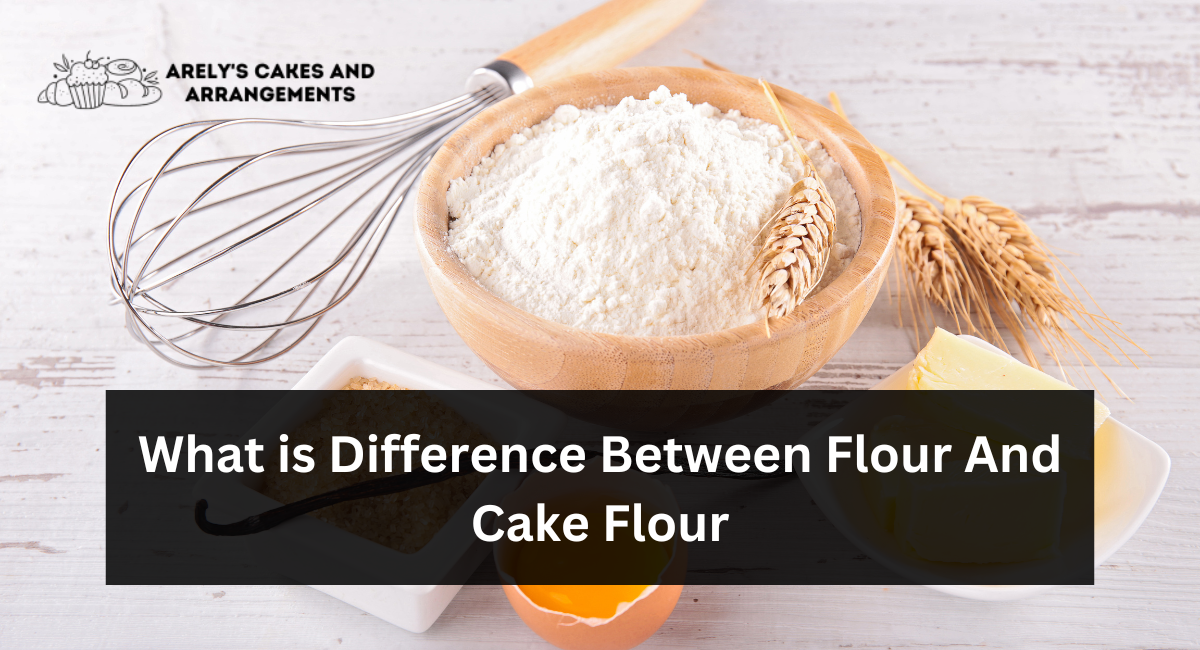Most grocery store shelves carry flour, and most recipes call for it; cake recipes frequently specify cake flour – typically bleached and enriched.
Flour differs depending on its protein content, affecting how your baked goods rise and their texture. Bread flour typically has higher protein levels, while cake and pastry flour have lower ones.
What is Flour?
Flour is a powdery substance created by milling dry wheat grains (or other starchy grains such as rye, corn, or rice), most often used in baking to produce soft, tender food such as cookies or pastries.
Flour comes from the endosperm of a wheat grain, which contains carbohydrates, proteins, and oil – these components make up what’s known as its “starchy center.”
Every flour has a different protein content that determines its strength and texture. High protein levels produce more gluten, giving baked goods dense structures.
Lower protein levels produce less gluten for more delicate textures.
Bread flour, pastry flour, and cake flour are all composed of wheat. However, Their protein levels differ, making each variety suitable for different baking projects.
Bread flour features higher protein levels than cake flour for heartier baked items like bread or pizza crust.
Cake flour is often made from low-protein varieties of wheat (often soft red winter wheat) that have been sifted extra fine, creating light and fluffy cake flour suitable for delicate baked goods such as cakes.
Chlorination further weakens gluten proteins to soften it – this process, known as deproteinization, ensures cake flour doesn’t contain gluten proteins from its kernel and remains gluten-free.
What is Cake Flour?
Cake flour differs from its all-purpose or bread counterpart in that its lower protein content leads to lighter, airier results in baked goods. It creates less gluten, providing an airier and lighter texture in baked goods.
Cake flour is typically composed of varieties of soft wheat (usually soft red winter or soft white wheat ) ground extra finely, producing an airier crumb that works well in delicate sponge cakes, cupcakes, and pastries.
Flour with higher protein content (like all-purpose or whole wheat) tends to be used in recipes requiring a substantial crumb, such as bread and pizza.
Most cake recipes call for all-purpose flour unless specified otherwise.
All-purpose flour contains 10-13% protein content, while cake flour boasts only 7-9 %.
Due to this difference in protein concentration and water absorption rate, cake flour has significantly smaller protein concentrations and lower water absorption rates than all-purpose flour.
Furthermore, bleaching helps protect its molecules against moisture absorption, bind fats more readily, and stabilize gas bubbles formed when baking soda and baking powder react with acidic elements in batters – perfect for fluffy light cakes such as Angel Food or Cream Cheese Pound Cake!
How is Cake Flour Different from All-Purpose Flour?
Flours vary greatly in their protein content, which enormously influences their doughs and baked goods.
Flours with higher protein levels produce more gluten, creating heartier textures like bread or pizza.
Conversely, lower protein levels produce delicate cakes and pastries with light textures, offering delicious treats like cupcakes.
Cake flour is typically composed of varieties of soft wheat (such as soft red winter wheat or soft white wheat ), which has been milled extra fine to achieve an extra low protein level and ensure fewer gluten forms when mixed with other ingredients, leading to fluffy baked goods with lighter textures.
Cake flour should be used when creating recipes with light or fluffy textures, such as sponge cakes, chiffon cakes, and angel food cakes.
It can also be incorporated into cupcakes and muffins, providing an ideal tender crumb in cookies like snickerdoodles.
All-purpose flour is an indispensable pantry staple and part of most bakes – from breads to cookies and cakes. Made with hard and soft wheat grains, its protein level ranges between 10-12%.
All-purpose flour has more structure and denser crumbs than cake flour.
How Can I Substitute All-Purpose Flour for Cake Flour?
All-purpose will do if your recipe calls for cake flour, but you have none. Just be mindful that flours contain different levels of proteins, which affect how much gluten forms in baked goods; those containing higher proteins (like bread flour ) tend to produce dense and stretchy textures, while those containing lower protein levels ( like cake flour) produce delicate treats with fluffier, lighter crumb.
Apart from its protein level, flour texture depends on particle size. This determines how quickly it absorbs water when baking; all-purpose flour typically has a medium grain size, while cake flour can be milled and sifted to an extra fine texture that quickly soaks up liquid during usage.
Cooking Light suggests adding a small amount of cornstarch when swapping all-purpose for cake flour when substituting, preventing some gluten formation and keeping tender textures intact.
This trick works particularly well in recipes calling for all-purpose or pastry flour, such as scones, biscuits, muffins, or cakes; remember, accurate measuring is key to success when working with any type of flour!
Conclusion:
In unraveling the mystery behind the baking world’s essential ingredients, we’ve explored the nuanced difference between all-purpose flour and cake flour.
As we conclude this journey into the heart of baking, it’s clear that understanding these distinctions can significantly impact the texture, crumb, and overall success of your baked goods.
While all-purpose flour offers versatility, cake flour specializes in creating the tender, delicate crumb that defines exquisite cakes.
So, the next time you embark on a baking adventure armed with this knowledge, you’ll be equipped to choose the perfect flour for your culinary masterpiece.
